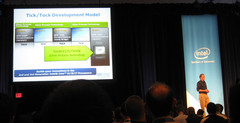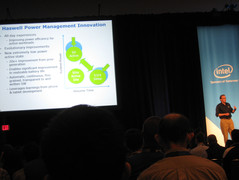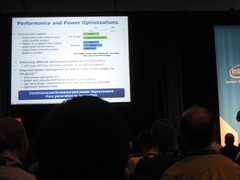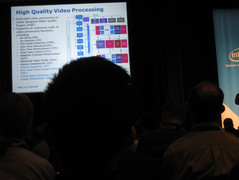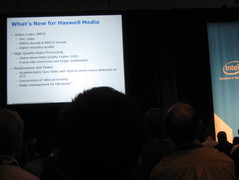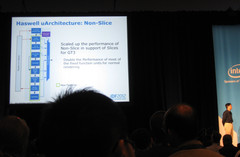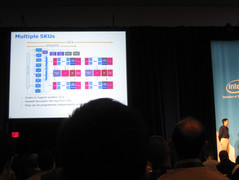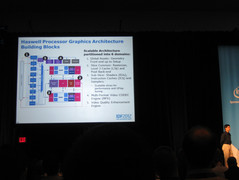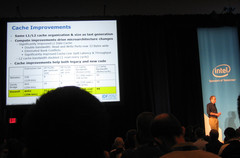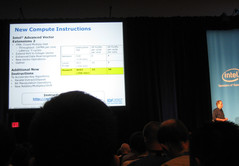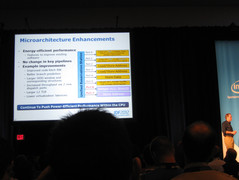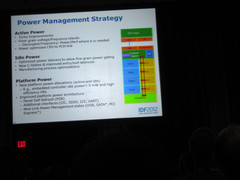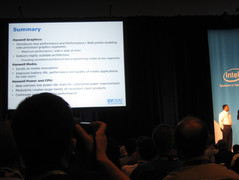Whereas Ivy Bridge was one of the big draws of IDF 2011, IDF 2012 is so far focusing heavily on Haswell and power management.
With Haswell, Intel has designed the fourth generation "tock" Core architecture to be somewhat platform-size agnostic, meaning the CPU will be finding its way from mobile consumer devices like tablets and notebooks all the way up to professional workstations. This is in line with the Day One keynote, where mobility and UI were the primary focus. In order to fit into the wide range of products, Intel claims the CPU will be highly scalable in terms of performance and energy demands. In particular, the the architecture has been designed with modularity, power, and performance in mind. To achieve all three, a large part of Haswell's flexibility will be due to its number of cores: less cores for smaller products and more cores for bigger products. In addition, by working with vendors and implementing panel self refresh, an idle state can only consume 30 to 50 mW compared to the 5 mW of current IVB products.
Though power-saving features are plentiful, an equal amount of time is being spent on vaunting the performance enhancements done on the silicon level to Haswell. Key pipelines will remain the same, though the CPU is now capable of 8 execution units per cycle instead of 6 compared to IVB. This alone is responsible for doubling the floating point operations of IVB (and SSE/AVX instructions) per clock cycle. To support the throughput, key bus systems (such as those connecting to cache) have had their widths doubled as well. The hardware improvements should have little effect in minimum power draw as they are expected to power down when their capabilities are not in demand.
Though exciting, no Haswell notebooks or even prototypes were on the show floor on Day One, a vast contrast to the handful of prototype notebooks sporting IVB the year prior. Regardless, Haswell notebooks and tablets are still promised for a 2013 launch.


